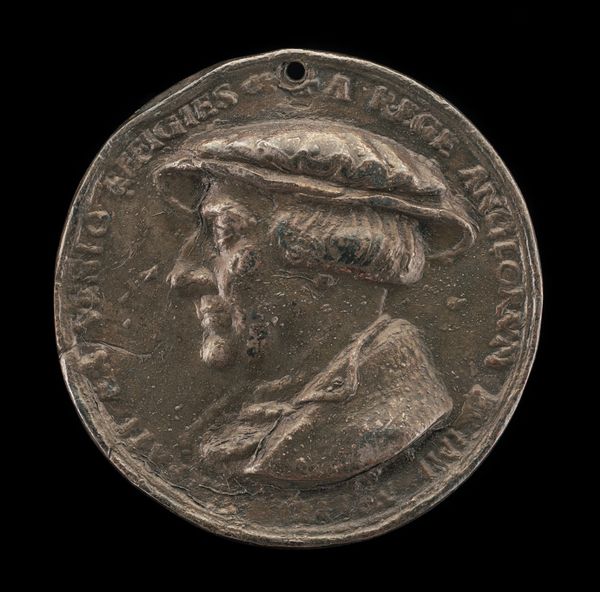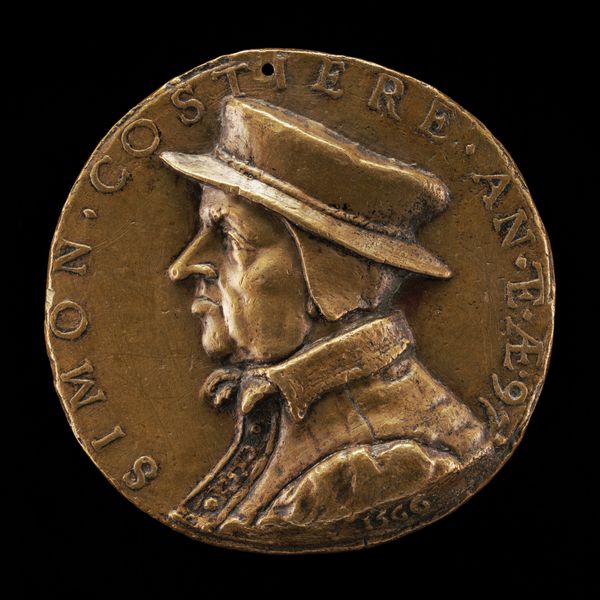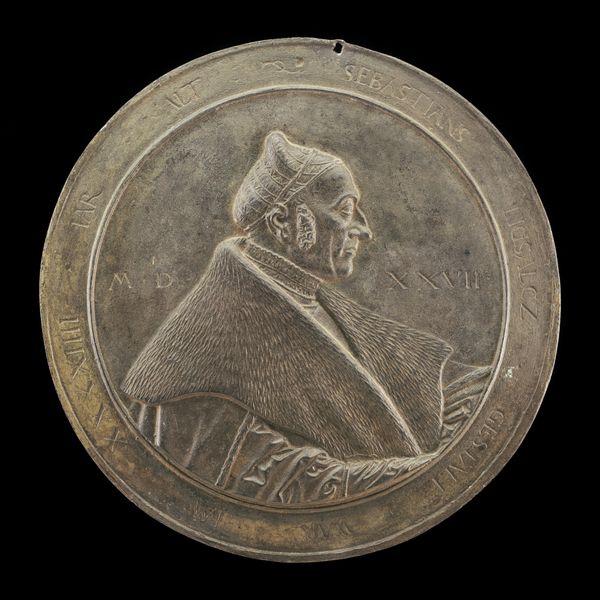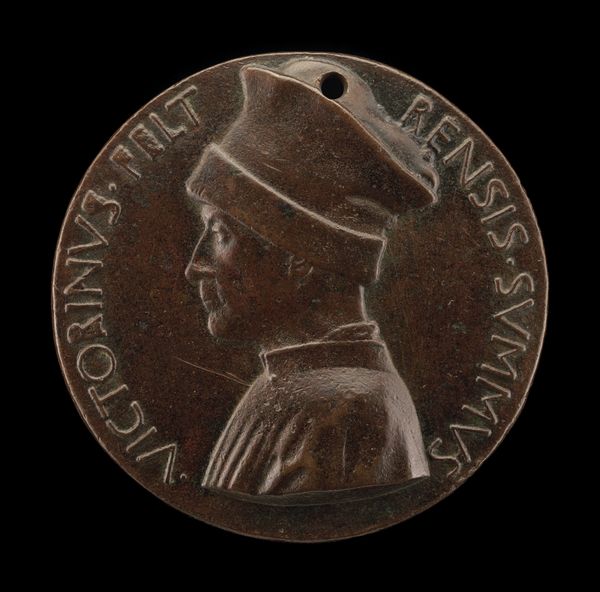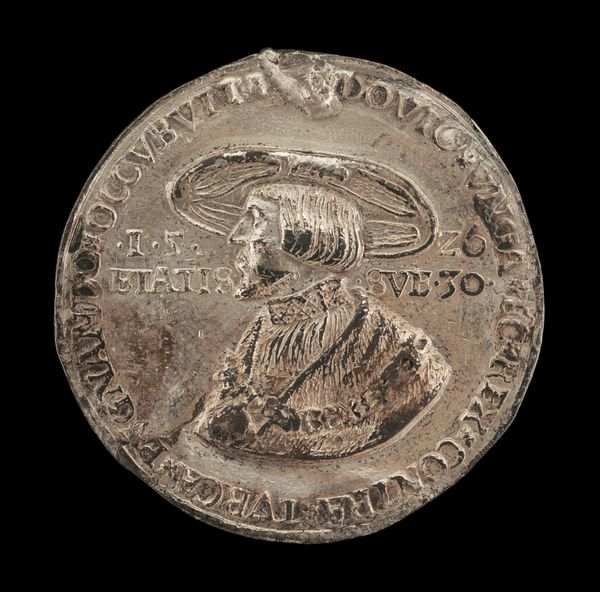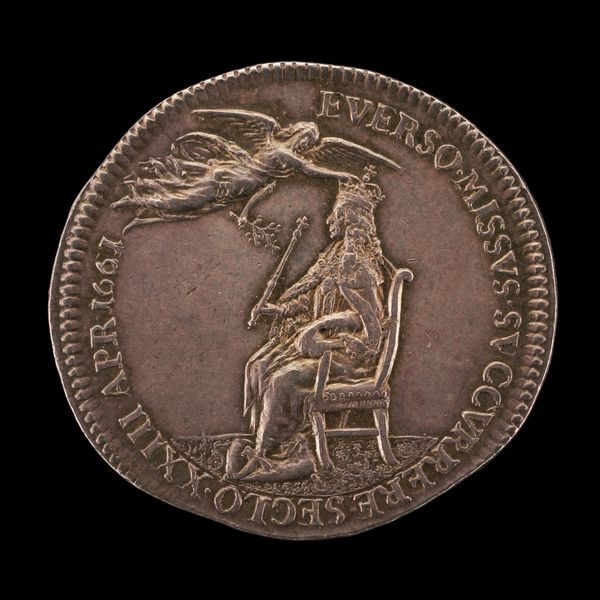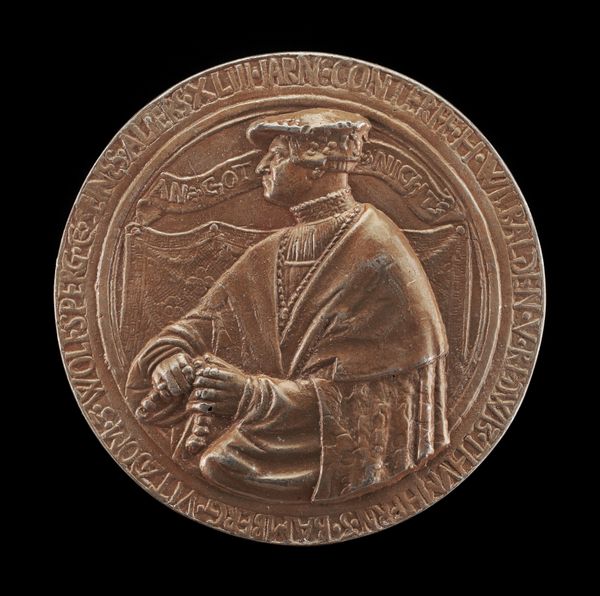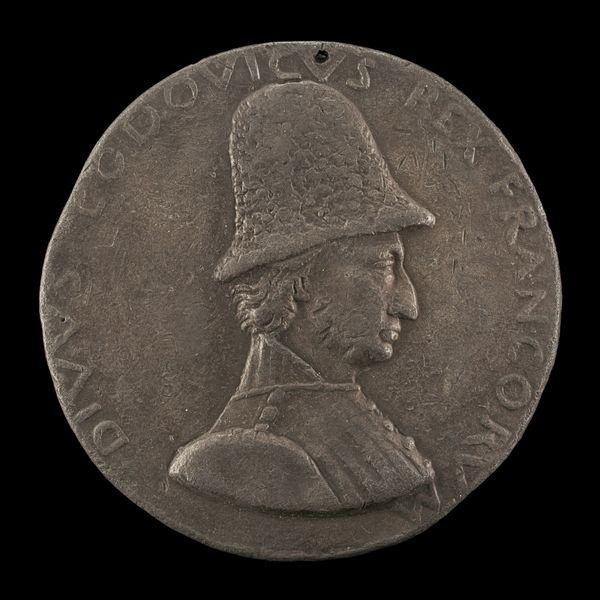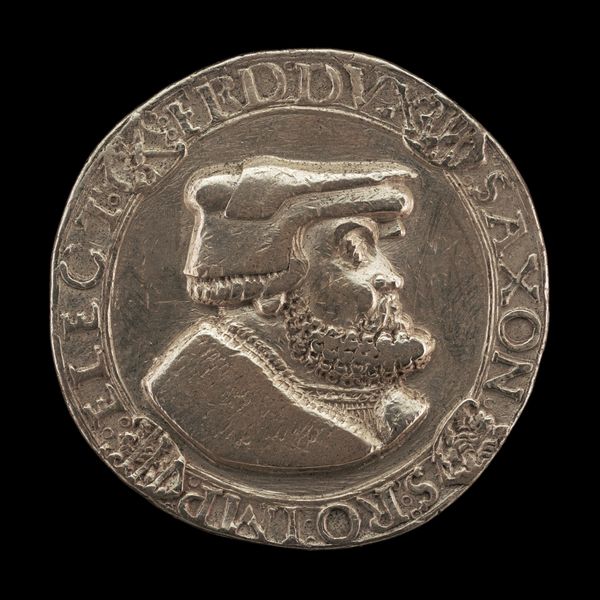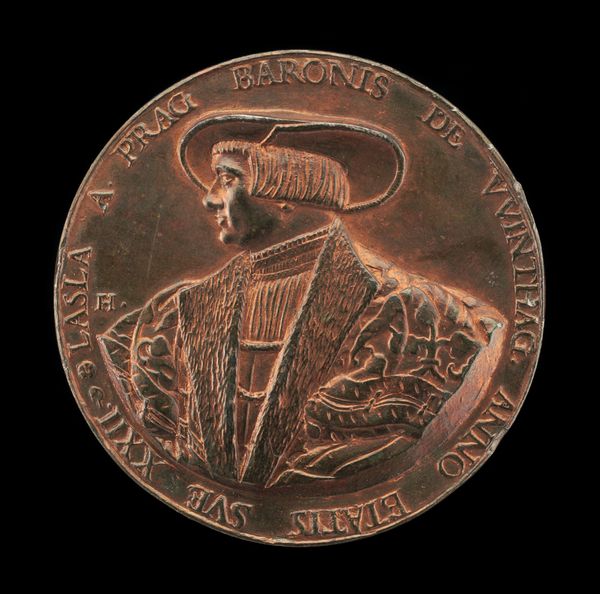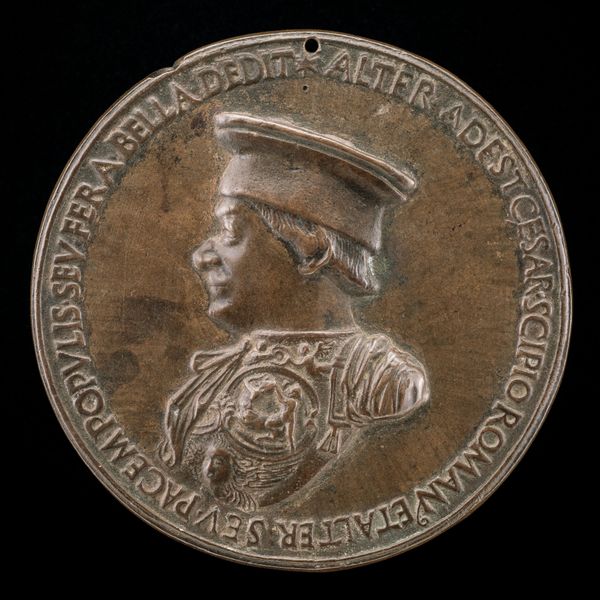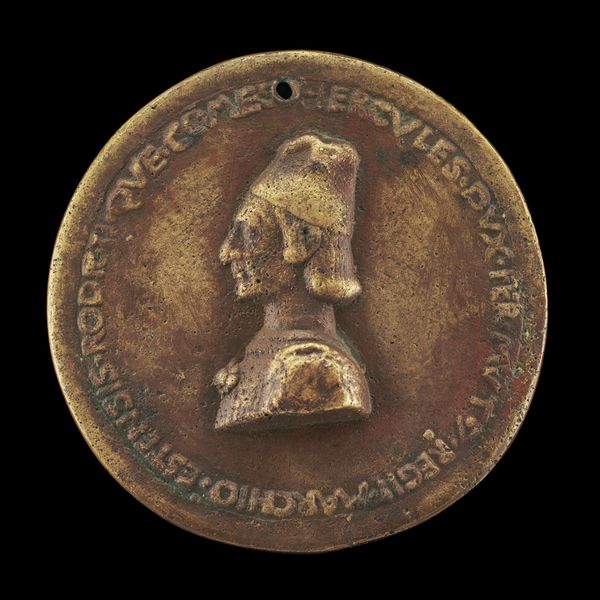![Maria of Austria, 1505-1558, Wife of Louis II, King of Hungary and Bohemia, 1522 [reverse] by Anonymous](/_next/image?url=https%3A%2F%2Fd2w8kbdekdi1gv.cloudfront.net%2FeyJidWNrZXQiOiAiYXJ0ZXJhLWltYWdlcy1idWNrZXQiLCAia2V5IjogImFydHdvcmtzL2NkZGNjNTU5LTdmZDYtNGVmMy04YjRjLWIzMWUyYTNkZTJiZC9jZGRjYzU1OS03ZmQ2LTRlZjMtOGI0Yy1iMzFlMmEzZGUyYmRfZnVsbC5qcGciLCAiZWRpdHMiOiB7InJlc2l6ZSI6IHsid2lkdGgiOiAxOTIwLCAiaGVpZ2h0IjogMTkyMCwgImZpdCI6ICJpbnNpZGUifX19&w=3840&q=75)
Maria of Austria, 1505-1558, Wife of Louis II, King of Hungary and Bohemia, 1522 [reverse] 1526
0:00
0:00
metal, sculpture
#
portrait
#
medal
#
metal
#
sculpture
#
11_renaissance
#
sculpting
#
sculpture
#
italian-renaissance
Dimensions: overall (diameter): 4.18 cm (1 5/8 in.) gross weight: 14.4 gr (0.032 lb.) axis: 12:00
Copyright: National Gallery of Art: CC0 1.0
Editor: This is a metal medallion created in 1526 depicting Maria of Austria, the wife of Louis II. There's something both imposing and fragile about this small portrait. How should we interpret this work? Curator: As an iconographer, the immediate draw is the weight of Maria's image embedded in this circular metal. Consider the intent behind such a crafted object. Medallions, from a long cultural memory, were created not just to depict, but to commemorate and disseminate power. Note the inscription encircling her – do you read it as an attribute, an appeal, or something else? Editor: It feels like an official title. "Maria Regina" is clear. Why choose this format? Curator: Exactly. Medals present a carefully constructed image. The choice of metal itself – its durability and sheen – conveys permanence and value. A portrait in profile carries an immediate historical reference back to the ancient Roman emperors and their coins. In its symbolism, does the portrait imply authority and dynastic connection? Editor: I see it now. Like claiming a historical legacy. Were these commonly made? Curator: Yes, medals were distributed, serving almost as portable propaganda, reinforcing Maria's status and legacy in a tangible way for contemporaries and for posterity. Consider the role objects play in shaping memory. What stories might it tell of a queen’s power? Editor: It makes you think about how calculated images were back then, as much as they are now, really. Curator: Precisely. This small object condenses complex power dynamics and personal ambition into a lasting, iconic form.
Comments
No comments
Be the first to comment and join the conversation on the ultimate creative platform.
